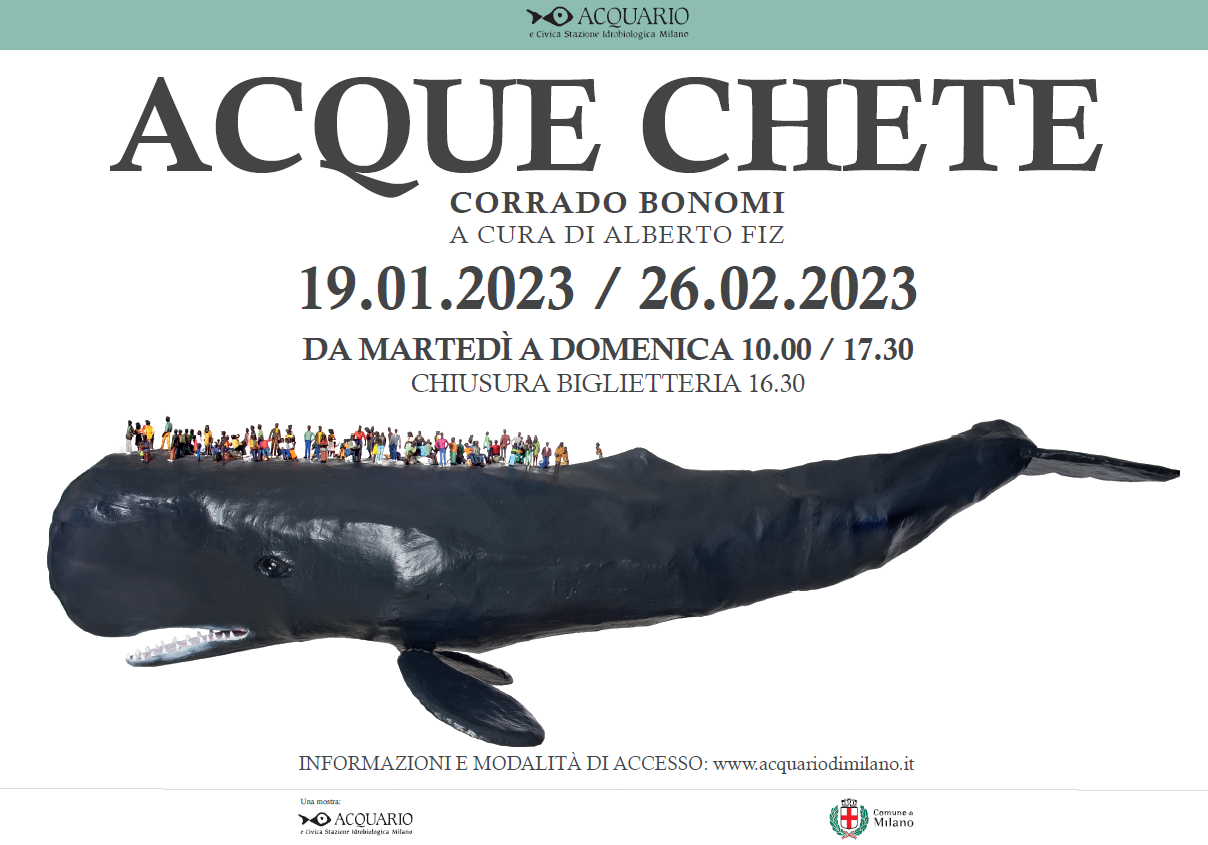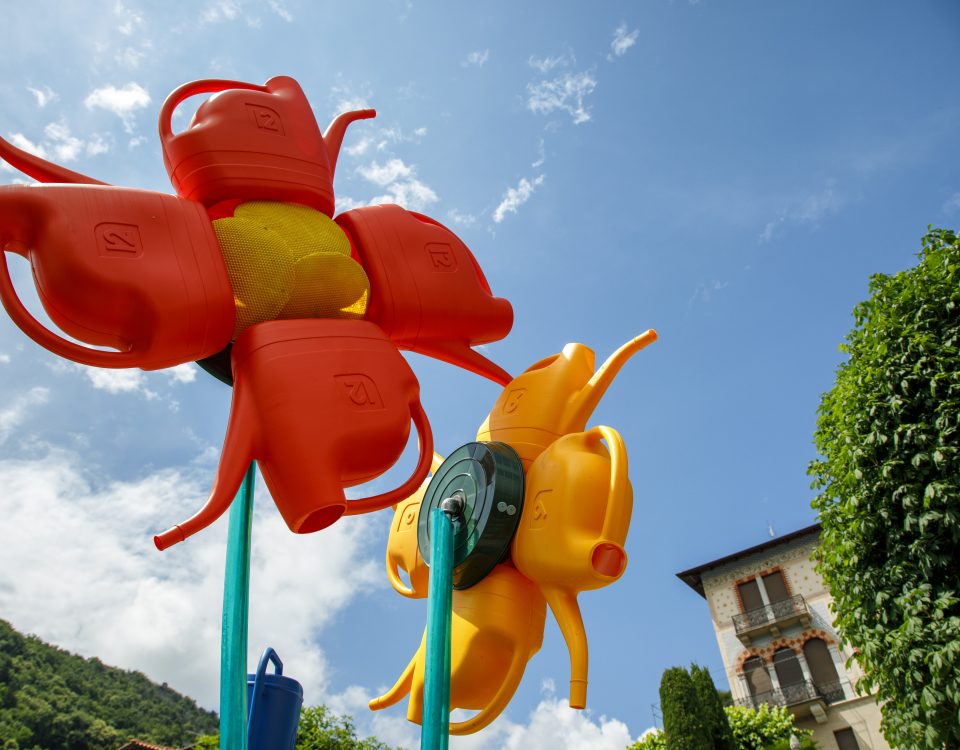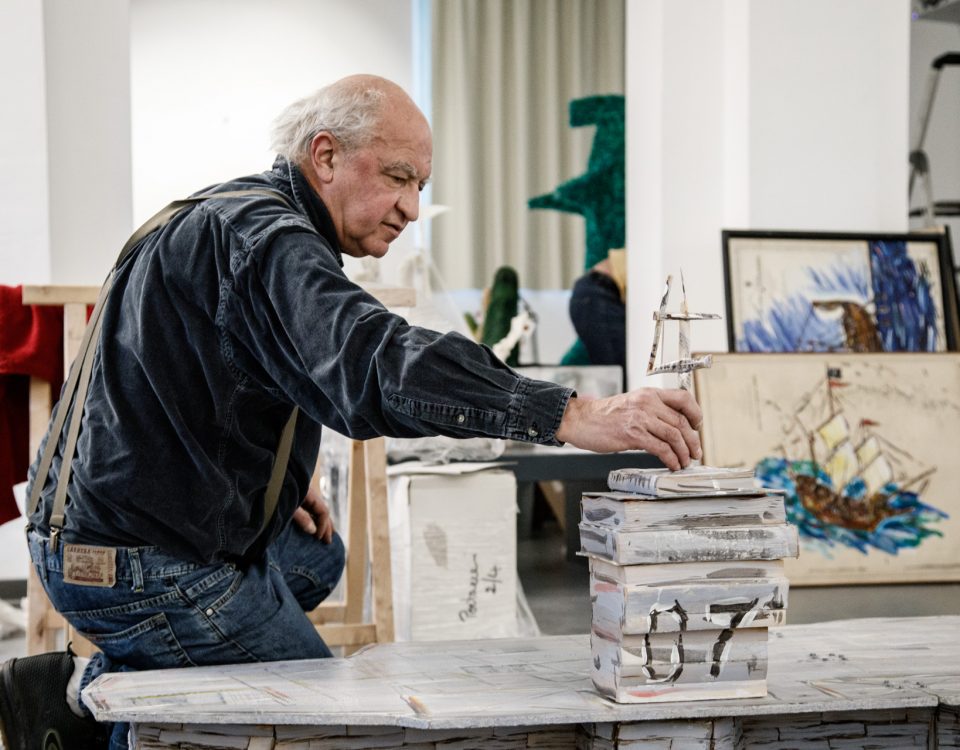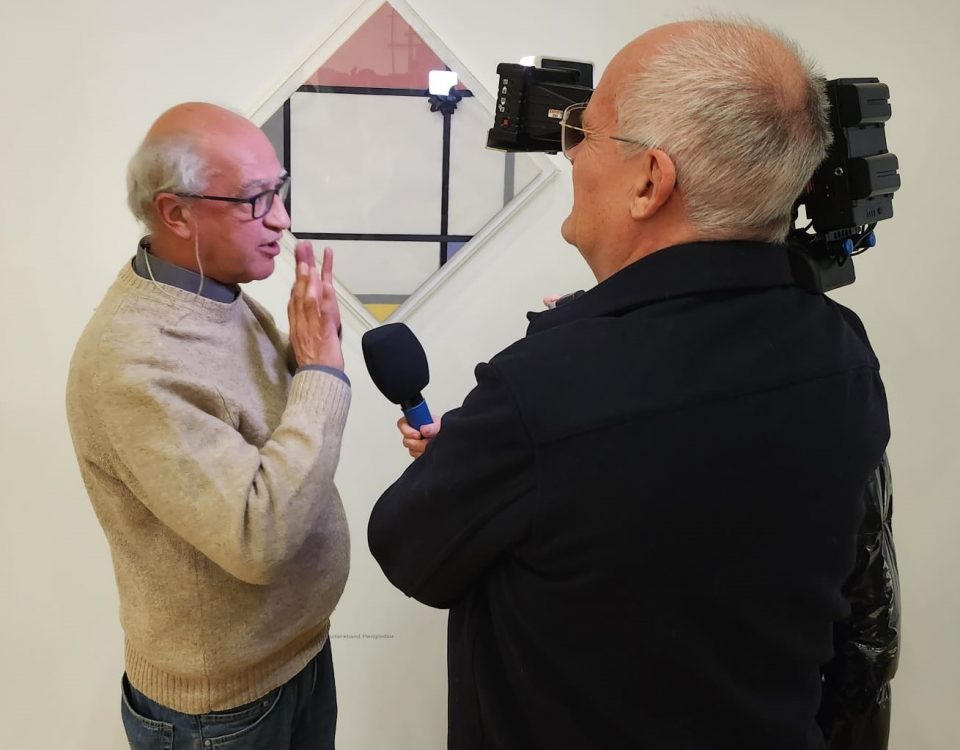
Corrado Bonomi at the Civic Aquarium of Milan
20/01/2023
About the “upside down” Mondrian
06/03/2023
After Bonomi’s return to the German scene with Tutto bene! The group show hosted at the Ritter Museum in Waldenbuch, here he is again in Wolfsburg at the Kunstmuseum
The Impossible Gift by Corrado Bonomi continues in its wake of success in Germany, as proof of the communicative power of this work, selected by Andreas Beitin and Elena Engelbrechter, curators of the exhibition.
The strength of this bonomian interpretation of the Dutch artist’s famous geometric works was perfectly described by Marli Hoppe-Ritter in a recent statement, that you can read here.
Dresses, hairspray, watches, T-shirts, bags — who doesn’t know them, the catchy and immediately recognizable designs of everyday objects based uninhibitedly and bluntly on the ingenious compositions of one of the most important artists of the twentieth century: Piet Mondrian. Like hardly any other, he succeeded within a few years in developing his art away from figurative painting towards a trend-setting “abstract” style, which he described in his extensive art theoretical writings as New Design or Neoplasticism. In this way, Mondrian made a significant step in the development of the history of modernist painting; for with his art, he succeeded in progressing “from image to imagery” as unequivocally as seldom before. The ostensibly simple compositions of initially black lines, colored squares and rectangles on white, light blue, or gray backgrounds no less than revolutionized the art world and forever changed the view of pictorial reality.
No other artist in the twentieth and twenty-first century has been quoted, copied, varied, and appropriated as often and in as many ways as Piet Mondrian—by fashion, advertising, architecture, design, and above all by art itself. To this day, countless artists continue to be preoccupied with Mondrian’s neoplastic magnum opus, so that the thesis may be proposed that he is the most frequently and diversely quoted artist of the twentieth century. In the year following his 150th birthday—postponed by several months due to the Corona pandemic—, the exhibition Re-Inventing Piet. Mondrian and the Consequences, which takes key works by Mondrian as its starting point, provides for the first time on this scale insight into the cosmos of the manifold new creations, adaptations, (critical) discussions, and further developments of his groundbreaking artistic compositions: from works of art by his contemporaries via the famous Mondrian dresses by Yves Saint Laurent, objects of applied art, design, and everyday culture to numerous works and installations by contemporary artists
The exhibition Re-Inventing Piet. Mondrian and the Consequences is accompanied by a comprehensive and generously illustrated publication (edited by Andreas Beitin and René Zechlin), published by Verlag der Buchhandlung Walther König.
Participants artists:
Bas Jan Ader, Claudia Angelmaier, Iván Argote, Amber Ambrose Aurèle, John Baldessari, Michael Barnaart van Bergen, Georg Baselitz, Chris Beekman, Anna & Bernhard Blume, John Bodin, Corrado Bonomi, Shin Bongchull, KP Brehmer, Mark Brusse, Hal Busse, Philippe Calia, Miguel-Ángel Cárdenas, Lygia Clark, Corneille, Lajos d’Ebneth, Theo van Doesburg, César Domela, Jacob van Domselaer, Tim Eitel, Ndidi Emefiele, Ernest T., Erró, Sylvie Fleury, Simon Freund, Ryan Gander, General Idea, Isa Genzken, Fritz Glarner, Melissa Gordon, Torben Giehler, Jean Gorin, Camille Graeser, Joachim Grommek, Dieter Hacker, Ian Hamilton Finlay, Mary Heilmann, Gregor Hildebrandt, Alfred Hrdlicka, Vilmos Huszár, Remy Jungerman, Barbara Kasten, Hiroshi Kawano, Tadashi Kawamata, Anselm Kiefer, Martin Kippenberger, Jakob Lena Knebl, Krijn de Koning, Joseph Kosuth, Lee Krasner, Germaine Kruip, Louise Lawler, Saul Leiter, Bart van der Leck, Sherrie Levine, Erik van Lieshout, Liu Ye, Cristina Lucas, Hermann Meier, Mathieu Mercier, Jonathan Monk, Thomas Moor, François Morellet, Sarah Morris, Marlow Moss, Robert Motherwell, Simon Mullan, Hélio Oiticica, Dennis Oppenheim, Eduardo Paolozzi, Claudio Parmiggiani, A. R. Penck, Gerrit Rietveld, Peter Rozemeijer, Tom Sachs, Yves Saint Laurent, Jörg Sasse, Kurt Schwitters, Kathryn Sowinski, Daniel Spoerri, Magnus von Stetten, Władysław Strzemiński, Grzegorz Sztwiertnia, Sophie Taeuber-Arp, Gerold Tagwerker, Volker Tannert, Timm Ulrichs, Bolesław Utkins, Lois Weinberger, Ben Willikens, Sebastian Winkler, Piet Zwart
From 11 March to 16 July 2023
Kunstmuseum Wolfsburg, Hollerplatz 1, Wolfsburg
Tuesday – Sunday: 11.00 – 18.00
Monday closed
For information: Re-Inventing Piet.Mondrian and the Consequences





